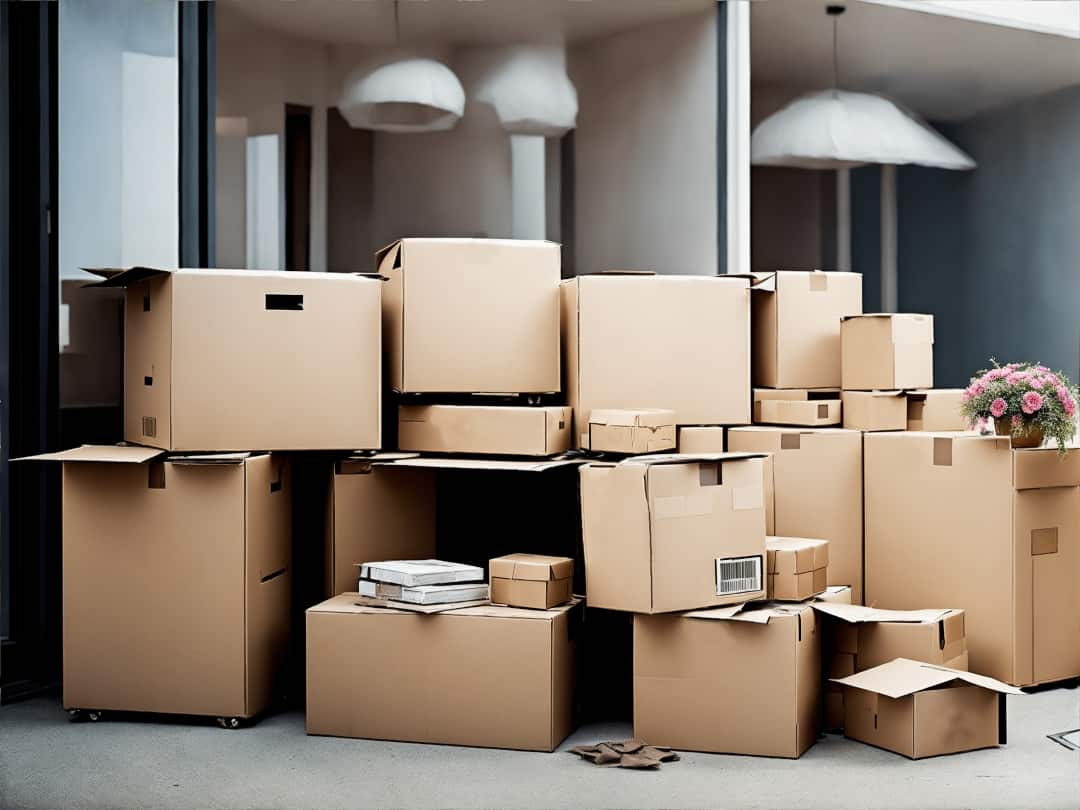Your Comprehensive Moving House Checklist.
From Planning to Settling In
Welcome to Neomoney’s Ultimate Moving House Checklist, where we’ve mastered the art of hassle-free relocations! We understand that moving can feel overwhelming, with countless details to manage and a mountain of tasks to tackle. But fear not, fellow mover! With our wealth of experience, gained from moving homes across suburbs and even across continents, we’ve honed our expertise to bring you the ultimate guide for a smooth transition. Our comprehensive article is your trusted companion, ensuring that every aspect of your move is meticulously planned and flawlessly executed. Say goodbye to stress and hello to a seamless moving experience. Together, we’ll embark on a weekly countdown, taking you step-by-step through each stage of the journey to your new home.
So, let’s dive in and embrace the excitement of this transformative adventure!
FOUR WEEKS TO MOVING DAY
In Queensland, property settlements are commonly set at a 30-day timeframe, which serves as the basis for our countdown move planner. While some purchase or sale home settlements may extend beyond 30 days, we have designed our checklist to accommodate the standard settlement period in this region. It’s important to be aware that property settlements typically take 30 days in Queensland. However, if your settlement period exceeds six weeks, you have the advantage of initiating your preparations well in advance. As soon as you sign the purchase or sale contract, it’s time to kick-start the countdown. Keeping this in mind, our comprehensive moving house checklist begins four weeks before your anticipated moving day. This timeline allows for ample time to complete all the essential tasks, ensuring a seamless and successful transition to your new home.
1. Ensure Adequate Property Insurance Coverage: Look at Policies and Budgeting
One key aspect to consider when buying in or moving to Queensland is the requirement for insurance coverage during the property purchase process. Unlike some other states where insurance coverage may not be mandatory, Queensland has specific regulations in place to protect buyers during the settlement period. This makes having insurance coverage an essential step for anyone purchasing a property in Queensland.
The reason insurance coverage is crucial for a Queensland purchase is that it safeguards your investment and offers financial protection against unforeseen circumstances. During the settlement period, which typically lasts 30 days, various risks can arise, such as damage to the property, loss of deposit, or even the failure of the settlement itself. Without adequate insurance coverage, you may be left vulnerable to these risks, which can have significant financial implications.
By obtaining insurance coverage specifically tailored for property purchases in Queensland, you ensure that you are protected against potential risks and uncertainties. This insurance provides coverage for events such as fire, theft, storm damage, and other unforeseen incidents that may occur before settlement is finalised. It offers peace of mind, knowing that your investment is safeguarded and that you have financial recourse in case of any unexpected events.
Considering the importance of insurance coverage for a Queensland property purchase, it is crucial to include this aspect in your moving preparations. As you embark on the four-week countdown to your moving day, take the time to research and acquire the appropriate insurance coverage that aligns with your specific needs. Consult with reputable insurance providers who specialise in property purchases to ensure you have the right level of protection.
To provide you with peace of mind and ensure that your new home purchase is covered, we offer a convenient and hassle-free solution. Simply click on the button below, ‘Get me insurance Cover’ below with your details, and our trusted partner, Allianz, will contact you directly to offer a complimentary 90-day insurance cover. This offer is available regardless of the state in which you are purchasing your new home. By taking advantage of this opportunity, you can have the confidence that your new home or investment is protected during the crucial settlement period. Don’t miss out on this valuable offer – fill in your details now and let Allianz handle your insurance needs.
2. Understanding Moving Insurance: Types available to Protecting Your Belongings”
When planning a move, it’s essential to consider the safety and protection of your belongings. Moving insurance provides valuable coverage in case of unexpected loss or damage during the relocation process. There are different types of moving insurance options available to suit your specific needs. One common type is “Basic Coverage,” which typically provides limited protection based on the weight of your items. However, if you require more comprehensive coverage, you may opt for “Full-Value Protection,” which covers the replacement cost of your belongings. Additionally, some moving insurance policies offer “Declared Value Protection,” allowing you to declare a specific value for your goods and receive compensation accordingly. It’s crucial to carefully review the terms, limitations, and deductibles associated with each insurance option to make an informed decision. By understanding the different types of moving insurance available, you can ensure the protection and peace of mind you need throughout your relocation journey. You may need to obtain a cover via your own insurer or your removalist may have the appropriate insurance to suit your requirement.
3. Plan Ahead for a Well-Organised Move: Sort Out Furnishings and Belongings
As you prepare for your move, it’s essential to assess your current furniture and belongings. Determine which items you no longer need and consider selling them if necessary. Look into local options for selling furniture or organise a garage sale. For items you no longer wish to keep, consider donating them to a local charity. This not only helps declutter your current home but also benefits others in need.
When it comes to the furnishings you plan to take with you, create a plan for their placement in your new house. Measure the spaces in your new home and visualise where each piece of furniture will fit. This proactive approach will save you time and effort when you arrive at your new residence.
4. Familiarise Yourself with Your New Neighbourhood and Local Services
When moving to a new area, one of the first things you should do is familiarise yourself with the local services available. Take the time to research and locate essential facilities such as doctors, schools, transport centers, shopping centers, chemists, and vets. It’s crucial to ensure that you have convenient access to these services in your new neighbourhood. Additionally, inform your current medical specialists, including your doctor, optometrist, dentist, and others, about your upcoming address change. This way, you can ensure a smooth transition of your medical records and continue to receive necessary healthcare without interruptions.

THREE WEEKS TO MOVING DAY
1. Stay Organised and Prepared: Packing Tips
As the moving day approaches, packing becomes more of a priority. To ensure an organised and efficient packing process, follow these tips:
Start acquiring free packing boxes from friends, family, or ask local stores for their empty cardboard boxes. If none are available, you can purchase an ample supply of moving boxes. Look for affordable options at local moving companies or online retailers.
Begin collecting bundles of old newspapers from friends and family as you’ll need them for individually wrapping fragile items such as plates, glasses, ceramic, porcelain, and chinaware. For packing very fragile items, consider using bubble wrap or packing paper to ensure they are well-protected during the move.
Acquire packing supplies such as packing tape and markers for labelling the boxes.
- Start packing items that you are unlikely to use before the move, starting with one room at a time. This will help you stay organised and make the unpacking process easier.
- Clearly label each box with its contents and the name of the room it belongs to. This will help the removalists know exactly where to place each box in your new home. Consider using packing labels for this purpose.
- Pack your belongings strategically to make the lifting and carrying process easier for the removalists. Use smaller boxes for heavier items, such as books or kitchen appliances, and larger boxes for lighter items, such as bedding or pillows. By keeping the weight of each box under 20kg, you ensure the safety of both the removalists and your belongings. If you have any items that exceed 100kg, it’s important to inform your removalist in advance, as additional fees may apply. Consulting with your chosen removalist company will provide you with specific weight guidelines and help ensure a smooth moving process.
- Pack electronic devices and their cords separately, and label them to avoid confusion when setting them up in your new home. Keeping cords organised will make the setup process much smoother.
- Pack an “Essentials-First-Night” box with items you’ll need immediately upon arrival at your new home. Include toiletries, a change of clothes, bedding, and any other essentials you’ll require. This way, you won’t have to unpack everything right away and can settle in comfortably.
- Consider creating an inventory of your belongings as you pack. This will help you keep track of what you have and make it easier to unpack at your new home. You can use a simple spreadsheet or a mobile app to document your inventory.
Remember to start packing well in advance to avoid last-minute stress and ensure everything is packed securely.
2. Maintain Continuity in Medical and Educational Services: Transfer Records
If you are moving to a new location across town or even further away, it’s important to arrange for the transfer of your family’s medical records and those of your pets. Contact your current healthcare providers and request copies of your medical records to be forwarded to your new medical doctor’s clinic or medical centre. This ensures that your new doctors will have a complete understanding of your medical history, enabling them to provide the best possible care.
If you have school-aged children, inform their current school about your impending move and coordinate the transfer of their educational records. Having their records safely transferred to their new school will help facilitate a smooth transition into their new learning environment. Additionally, ensure you have all your children’s immunisation records securely stored for future reference.
3. Secure Your Valuables: Safely Packing and Transporting Jewellery and Important Documents
When preparing for a move, it’s crucial to take extra care in handling your valuable possessions such as jewellery and important documents. Start by gathering all your valuable items and placing them in a secure and designated container.
Consider using a small lockable box or a safe to ensure their safety during the move.
- For jewellery, use individual pouches or small boxes to separate and protect each piece. Avoid tangling necklaces or bracelets by fastening them properly. Additionally, consider taking photographs or creating a detailed inventory of your jewellery to have a record in case of any loss or damage.
- Important documents, such as passports, birth certificates, and legal paperwork, should be stored in a waterproof and fireproof container. Consider using plastic sleeves or folders to keep them organised and protected. It’s also a good idea to make digital copies of these documents and store them securely on a password-protected external drive or in a secure cloud storage service.
- During the move, keep the container with your valuables close to you, such as in your personal bag and if small enough to place in the glove compartment or larger in the trunk (car boot) of your car.
By taking these precautions, you can ensure the safety and security of your precious items throughout the moving process.
4. Notify Service Providers: Updating Your Address with Financial Institutions and Utility Companies
As you prepare for your move, it’s essential to update your address with relevant service providers to avoid any disruption in important communications and ensure a smooth transition. Start by contacting your, credit card companies, and insurance providers. If you are refinancing or purchasing the property with a new financial institution, your broker would have updated these details with the new lender.
This will ensure that your financial statements, credit card bills, and insurance documents are sent to the correct nominated new move-in address.
Next, reach out to your local council rates, utility companies, such as water, electricity, gas, phone, internet, and cable providers. Inform them about your move and provide them with the necessary details of your new address. This will allow them to transfer or set up your utility services in your new home, ensuring that you have access to essential amenities from the moment you arrive.
In addition to financial and utility providers, don’t forget to update your address with other essential service providers, such as healthcare providers, subscription services, and any other organisations or institutions that regularly correspond with you by mail. By proactively updating your address, you can avoid any potential issues and ensure that your mail reaches you at your new residence without any delay.

5. Organise Your Digital Life: Backing Up and Transferring Data and Files
In today’s digital age, it’s important to consider your digital assets when preparing for a move. Start by backing up all your important files and data on external hard drives or cloud storage services. This includes documents, photos, music, videos, and any other digital content that holds value to you.
For physical storage devices like external hard drives, label them clearly and pack them securely in a designated box to prevent damage during the move. If you choose to use cloud storage, ensure that your accounts are up to date and that all your files are synchronised and accessible from multiple devices.
In addition to backing up your data, consider transferring your digital subscriptions and services to your new address. This includes updating your billing and contact information for streaming platforms, online shopping accounts, social media profiles, and any other digital platforms you regularly use. By doing so, you can continue to enjoy uninterrupted access to your favourite services and platforms after your move.
Remember to create a checklist of all the digital aspects you need to address, including passwords, account recovery information, and login credentials. By organising your digital life ahead of time, you can make the transition to your new home smooth and hassle-free, ensuring that you have access to your important files and digital services without any disruptions.
6. Notify Schools and Childcare Providers: Ensuring a Smooth Transition for Your Children
If you have school-aged children or rely on childcare services, it’s crucial to inform their schools and providers about your upcoming move. Start by contacting your children’s schools and arrange for the transfer of their records to their new school. Provide the necessary documentation, such as proof of residency and any required forms, to ensure a seamless transition.
If your children attend a day-care centre or rely on a childcare provider, notify them of your move as well. Discuss the last day of attendance and any outstanding payments or paperwork that need to be settled. It’s also a good idea to ask for recommendations or referrals for childcare services in your new area if necessary.
Additionally, consider informing any extracurricular activity providers, such as sports teams, music classes, or clubs, about the upcoming change. This will allow them to update their records and facilitate a smooth transition for your children once you settle into your new home.
By proactively notifying schools and childcare providers, you can ensure that your children’s educational and social needs are addressed during the moving process. This will help them adjust to their new environment more easily and continue their academic and extracurricular activities without significant disruption.
7. Coordinate Pet Care: Arranging Boarding or Transportation for Your Pets
If you have furry friends as part of your family, it’s important to make appropriate arrangements for their care during the moving process. Depending on the distance of your move and the nature of your pets, you may need to consider boarding services or specialised transportation options.
Research and book reputable pet boarding facilities in your new area well in advance.
Take into account their services, facilities, and the requirements they have for vaccinations and health checks.
- Ensure that your pets are up to date with their vaccinations and obtain the necessary documentation to provide to the boarding facility.
- If you are moving a long distance and prefer to have your pets with you, research pet-friendly transportation options. Some airlines allow pets to travel in the cabin or cargo area, while specialised pet transport services provide door-to-door transportation for pets. Ensure that you comply with all the necessary regulations and requirements for transporting pets, including appropriate carriers, health certificates, and any travel restrictions.
- During the move, create a comfortable and secure space for your pets in your current home where they can stay calm and away from the chaos of the moving process. Provide them with familiar bedding, toys, and enough food and water for the journey. Consider using pheromone sprays or calming aids to help reduce stress during this transition period.
By coordinating pet care well in advance, you can ensure the well-being and comfort of your beloved pets during the move and help them adjust to their new surroundings smoothly.
8. Maintaining and Transferring Vehicle Registration and Insurance: Ensuring Your Vehicles are Ready for the Move
Moving a long distance or interstate, you need to prepare for your upcoming move, it’s important to take the necessary steps to maintain and transfer the registration and insurance of your vehicles. This will help ensure a smooth transition and keep you compliant with legal requirements.
Follow these guidelines to ensure your vehicles are ready for the move:
- Review your vehicle registration and insurance policies: Contact your local motor vehicle department to understand the specific requirements for transferring your vehicle registration to your new location. Familiarise yourself with the necessary documentation and any fees involved. Additionally, contact your insurance provider to update your policy with your new address and discuss any changes that may be required.
- Conduct a vehicle maintenance check: Before the move, schedule a maintenance check for your vehicles. This includes checking the fluid levels, tire pressure, brakes, and overall mechanical condition. Address any necessary repairs or servicing to ensure your vehicles are in optimal condition for the move.
- Transfer your vehicle records: If you’re moving to a different state or region, you may need to transfer your vehicle records. This can include obtaining a new driver’s license, updating vehicle inspections, or transferring ownership titles. Research the requirements specific to your new location and complete the necessary paperwork within the designated timeframes.
- Update your vehicle emergency kit: As part of your moving preparations, update your vehicle emergency kit to include essential items such as a spare tire, jack, jumper cables, and emergency roadside assistance contact information. This will ensure you’re prepared for any unexpected situations during your journey.
9. Sharing Your Change of Address: Notifying Friends, Family, and Important Contacts
As you prepare for your move, it’s crucial to inform your friends, family, and important contacts about your change of address. Keeping everyone updated will ensure a seamless transition and allow them to stay connected with you.
Follow these steps to share your change of address effectively:
- Compile a list of contacts: Make a comprehensive list of friends, family members, and important contacts who need to be informed about your change of address. This includes close relatives, friends, employers, banks, insurance providers, healthcare professionals, and any subscription or membership services.
- Send personalised notifications: Craft personalised notifications to each contact, clearly stating your new address, contact number, and any other relevant details. Consider sending a mix of emails, letters, or even phone calls to ensure that the message reaches everyone.
- Update your online profiles: If you have social media accounts, personal websites, or professional profiles, make sure to update your contact information accordingly. This will help others find your new address and stay connected with you.
- Forward your mail: Contact the Australia Postal service to arrange for mail forwarding. This service will redirect your mail from your old address to your new address for a designated period. This ensures that any mail sent to your old address will still reach you during the transition period.
- Update your online platforms and subscriptions: Take the time to update your address on any online platforms or subscriptions you use regularly. This includes e-commerce websites, online banking platforms, streaming services, and online shopping accounts. Keeping your address up to date will prevent any inconvenience or delays in receiving important notifications or packages.
By proactively notifying your friends, family, and important contacts about your change of address, you’ll maintain strong connections and ensure that important information reaches you promptly. Taking these steps will help streamline the transition and reduce any potential disruptions.
10. Ensuring Home Security: Assessing and Implementing Safety Measures for Your New Home
When moving to a new home, it’s crucial to prioritise home security to protect your property and loved ones. By assessing and implementing appropriate safety measures, you can create a secure living environment.
Follow these steps to ensure home security in your new home:
- Conduct a security assessment: Begin by conducting a thorough assessment of your new home’s security vulnerabilities. Walk around the property, identifying any potential entry points, weak locks, or outdated security systems. Assess the lighting conditions both inside and outside the house, as well as the visibility from the street.
- Install or upgrade locks and security systems: Consider installing or upgrading locks on doors and windows to enhance security. Explore options such as deadbolt locks, smart locks, or security systems with cameras, motion sensors, and alarms. Consult with a professional locksmith or security expert to determine the best solutions for your home.
- Improve outdoor lighting: Adequate outdoor lighting can deter potential intruders and enhance overall safety. Install motion sensor lights near entrances, pathways, and dark areas around the property. Ensure that the lighting covers all key areas, including the front and backyards, garage, and any other exterior spaces.
- Reinforce doors and windows: Strengthening doors and windows is essential for preventing unauthorized access. Consider reinforcing door frames, installing security film on windows to prevent breakage, and adding window locks or security bars for added protection. Secure sliding doors with bars or dowels to prevent them from being forced open.
- Consider a home security system: Invest in a reputable home security system that meets your needs and budget. These systems provide an additional layer of protection, with features such as professional monitoring, emergency response, and remote access through mobile apps. Research different providers, compare packages, and choose a system that suits your requirements.
- Get to know your neighbours: Building good relationships with your neighbours can contribute to a safer community. Introduce yourself to your neighbours and exchange contact information. Look out for each other’s properties, report any suspicious activities, and consider forming a neighbourhood watch group if there is none.
- Update emergency contact information: Ensure that your emergency contact information, such as local law enforcement, fire department, and medical services, is updated to reflect your new location. Familiarize yourself with the emergency procedures specific to your area.
By taking proactive steps to assess and enhance the security of your new home, you’ll provide peace of mind for yourself and your family. Creating a safe living environment will contribute to a positive and secure transition to your new home.
11. Managing Moving Expenses: Tracking Costs and Allocating Funds for a Smooth Move
As in step 1, Stay Organised and Prepared, we address a few of these in more detail, moving involves various expenses, and it’s essential to budget and manage your costs effectively to ensure a smooth and financially sound transition.
Follow these steps to manage your moving expenses:
- Create a moving budget: Start by creating a detailed moving budget that includes all the anticipated costs, such as packing supplies, moving services, transportation, insurance, storage, and any additional expenses related to your specific situation. Take into account both one-time expenses and recurring costs.
- Obtain multiple moving quotes: Request quotes from multiple moving companies to compare prices and services. Be sure to provide accurate information about your inventory and any specific requirements to receive accurate estimates. Consider factors such as insurance coverage and additional services offered when evaluating the quotes.
- Save on packing supplies: To save on packing supplies, explore options such as acquiring free or discounted boxes from local stores or asking friends and family. Utilise newspaper, bubble wrap, or clothing to wrap fragile items instead of purchasing expensive packing materials. Look for discounts or promotions on packing supplies from online retailers or local moving companies.
- Sell or donate unwanted items: Before the move, declutter your belongings and consider selling or donating items you no longer need. This not only reduces the volume of items to be moved but can also generate some additional funds to offset moving costs.
- Keep track of moving-related expenses: Maintain a record of all moving-related expenses, including receipts, invoices, and contracts. This will help you stay organised, track your spending, and ensure you stay within your budget.
- Allocate funds for unforeseen expenses: It’s essential to allocate a portion of your budget for unexpected costs that may arise during the moving process. This can include minor repairs, storage fees, or additional packing supplies.
- Review your financial options: If needed, explore financial options such as personal loans, credit cards, or moving assistance programs. Be sure to carefully assess the terms and interest rates associated with these options and choose the one that aligns with your financial goals and capabilities.
By actively managing your moving expenses, you’ll have better control over your finances and ensure a smooth transition without unnecessary financial strain. Proper budgeting and tracking will help you make informed decisions and reduce any financial stress during this important life event.
12. Understanding Local Laws and Regulations: Researching and Adapting to Your New Area
When preparing for a move to a new area, it’s essential to familiarize yourself with the local laws and regulations. This will help you smoothly transition into your new community and ensure compliance with any specific requirements.
Follow these steps to research and understand the local laws and regulations in your new area:
- Conduct thorough research: Start by researching the laws and regulations that apply to your new area. Look for resources such as local government websites, community forums, and official publications. Pay attention to areas such as zoning laws, building codes, parking regulations, noise ordinances, pet regulations, and any other relevant regulations that may impact your daily life.
- Seek legal advice if necessary: If you have specific concerns or questions about certain legal matters, it’s advisable to seek professional legal advice. An attorney who specialises in local laws can provide you with valuable insights and guidance to ensure you understand your rights and obligations in your new area.
- Join local community groups: Engaging with local community groups and organisations can be a great way to gain insights into the culture, customs, and unwritten rules of your new area. Attend community meetings, join online forums or social media groups, and participate in local events. These interactions will provide you with firsthand knowledge and a deeper understanding of the local community.
- Contact local authorities: Reach out to the appropriate local authorities, such as the city or town hall, to inquire about any specific regulations or permits that may apply to your situation. For example, if you plan to make structural changes to your new home, such as renovations or additions, you may need to obtain permits or adhere to specific guidelines.
- Be open to learning and adapting: Moving to a new area means embracing a new environment and adapting to different rules and regulations. Keep an open mind and be willing to learn and adjust your behaviour accordingly. This includes being mindful of local customs, traffic regulations, waste disposal procedures, and any other practices that are unique to your new area.
By investing time and effort in researching and understanding the local laws and regulations, you’ll be well-prepared to navigate your new community with confidence and compliance. This proactive approach will help you integrate smoothly into your new area and contribute to a positive living experience.

TWO WEEKS TO MOVING DAY
1. Inform Important Parties of Your Address Change
As your move date approaches, and you missed a few to-dos in Three Weeks To Go, we re-look at important to-do’s. It’s crucial to notify various parties of your address change.
Here are some essential contacts to consider:
- Postal services: Submit a change of address form with your Australia Post local office to have your mail forwarded to your new address.
- Utilities: Contact your utility companies (electricity, gas, water) to arrange disconnection at your current address and connection at your new address.
- Internet, cable, and phone providers: Notify your service providers of your move to ensure a smooth transition of services.
- Insurance providers: Update your address with your insurance companies to maintain coverage for your new home.
- Banks and financial institutions: Inform your bank, credit card companies, and other financial institutions about your change of address.
- Government agencies: Update your address with the relevant government agencies, such as the tax office and electoral commission, to ensure you receive important correspondence.
- Subscriptions and memberships: Notify any subscription services, magazines, clubs, or other memberships about your address change.
By informing these parties in advance, you can minimise disruptions and ensure you receive important communications at your new address.
2. Arrange for Professional Moving Services and Assistance
If you plan to hire professional movers or other services to assist with your move, now is the time to make those arrangements. Obtain quotes from reputable moving companies and compare their services and prices. Consider factors such as their experience, insurance coverage, and customer reviews before making a decision. Book their services well in advance to secure your desired moving date.
Additionally, if you need help with packing, cleaning, or other tasks, consider hiring professional services or reaching out to friends and family for assistance. Having extra hands-on deck can make the moving process much smoother and less overwhelming.
3. Return Borrowed Items: Tie Up Loose Ends
Before moving, take the time to return any borrowed items to their respective owners. This includes library books, DVDs, or any other items you may have borrowed from neighbours or friends. By returning these items promptly, you uphold good relationships and ensure that nothing is inadvertently left behind.
Additionally, if you have perishable food stored in your freezer, start incorporating it into your meals to avoid wastage. Minimising food waste is not only environmentally responsible but also saves you money.
4. Minimising Food Waste: Incorporating Perishable Items into Your Meals
When you’re two weeks away from your move, it’s a good time to start paying attention to the perishable food items in your pantry, fridge, and freezer. By planning your meals strategically and utilising these items, you can minimise food waste and make the most of what you already have. Here are some tips to help you with this process:
- Take inventory: Begin by assessing the perishable food items you currently have. Check the expiration dates and prioritise using those that will expire soon. Make a list of ingredients and meal ideas based on what you have available.
- Meal planning: Plan your meals for the remaining weeks leading up to the move around the perishable items. Incorporate them into your recipes and make sure to use them before they expire. Get creative and experiment with new recipes to make the most of what you have.
- Organise your meals: Create a meal schedule to help you stay organised. Assign specific perishable items to each day’s meals to ensure nothing goes to waste. Consider batch cooking and meal prepping to make the process more efficient.
- Freeze or preserve: If you have surplus perishable items that you won’t be able to consume before the move, consider freezing them or finding alternative preservation methods. Properly label and store them in airtight containers or freezer bags to maintain their quality.
- Share with others: If you have excess perishable items that you won’t be able to use, consider sharing them with friends, family, or neighbours. It’s a great way to prevent waste while also building connections within your community.
Remember, minimising food waste is not only beneficial for the environment but also for your budget. By using up perishable items and reducing waste, you’ll save money on groceries and contribute to a more sustainable lifestyle.
ONE WEEK TO MOVING DAY
1. Confirm and Finalise Your Moving Plans
As your move approaches into Week One, take some time to confirm and finalise your moving plans.
Here’s what you should do:
- Contact your chosen moving company to reconfirm the details of your move, including the date, time, and any specific requirements.
- If you’re moving house yourself, ensure you have rented a moving truck or made alternative arrangements for transportation.
- Double-check that all necessary packing supplies are ready, including boxes, tape, markers, and packing materials.
- Confirm the disconnection of utilities at your current address and the connection at your new address.
- Notify your current landlord or property manager about your move-out date and arrange for the return of keys.
- Begin disassembling any furniture or fixtures that require it, and pack the necessary components together.
By confirming these details in advance, you can ensure a smooth and hassle-free moving day.
2. Pack Essentials and Personal Items Separately
As you approach the final days before your move, set aside essential items and personal belongings that you’ll need immediate access to. This includes things like:
- Important documents: Gather passports, identification papers, medical records, and any other essential documents. Keep them in a secure folder or bag that you’ll keep with you during the move. We have addressed documents in THREE WEEKS TO GO, click here if you would like to read more.
- Valuables: Collect valuable items such as jewellery, cash, and sentimental items that you prefer to transport yourself. Keep them in a safe and easily accessible place. We have addressed valuables in THREE WEEKS TO GO, click here if you would like to read more.
- Medications: If you or your family members take regular medications, make sure to pack an adequate supply for the duration of the move, plus a few extra days.
- Change of clothes and toiletries: Pack a small bag with enough clothes and toiletries to cover a few days. This will ensure you have essentials on hand while you unpack and settle into your new home.
- Electronics and chargers: Keep your laptops, smartphones, tablets, and their chargers easily accessible so you can use them during the move or immediately upon arrival at your new home.
By packing these items separately and keeping them with you, you’ll have everything you need during the transition period.
1 to 2 Days Before Moving into the Property: Final Walk-Thorough Property Purchase Inspection
Before the settlement of the property, it’s crucial to conduct a thorough final walk-through inspection to ensure everything is in order and if any repairs are required from the initial building and pest report.
Here are the 10 key items to carefully assess during this inspection:
- Overall condition: Evaluate the general condition of the property, confirming that any repairs mentioned in the building and pest report have been satisfactorily addressed by the seller.
- Structural integrity: Examine the property for any signs of new damage or issues with its structure, such as cracks in walls or ceilings, uneven floors, or sagging.
- Doors and windows: Test all doors and windows to ensure they open and close smoothly. Verify that locks, handles, and hinges are functioning properly.
- Plumbing system: Check the functionality of faucets, showers, and toilets to ensure proper water flow and drainage. Look for any signs of leaks or water damage under sinks and around pipes.
- Electrical systems: Test light switches, power outlets, and fixtures to ensure they are in working order. Check for any flickering lights or malfunctioning switches.
- Appliances: If applicable, inspect all appliances included with the property, such as the stove, oven, dishwasher, refrigerator, and HVAC system. Ensure they are functioning correctly and free of any damages.
- Heating and cooling systems: Test the heating and cooling systems to verify their functionality. Check for any unusual noises, odours, or issues with temperature control.
- Plumbing fixtures: Examine sinks, showers, and toilets for any signs of leaks, clogs, or water pressure problems. Ensure that hot water is readily available and that all fixtures are properly connected.
- Interior condition: Assess the interior of the property, including walls, ceilings, and floors. Look for any new damages, such as stains, cracks, or holes, that may have occurred since the previous inspection.
- Exterior condition: Inspect the exterior of the property, paying attention to the roof, gutters, siding, and landscaping. Look for any visible damages or maintenance issues that need to be addressed.
By thoroughly evaluating these key areas during the final walk-through inspection, you can ensure that the property is in the expected condition before settling the transaction. It provides you with peace of mind and allows for timely resolution of any remaining concerns or issues.
Call Utilities and Service Providers
Prior to your move-in date for tomorrow or the next, it is essential to get in touch with your energy provider to ensure that the electricity and gas services at your new home have been confirmed for tomorrow’s move-in. However, if you have already received confirmation, there is no need to make an additional call. Moreover, it is advisable to follow up with other service providers, including water, phone, internet, and pay TV providers, regarding the connection arrangements for your move-in date at the new address, in case they haven’t been confirmed yet.
4. Minimising Food Waste: Incorporating Perishable Items into Your Meals
When you’re two weeks away from your move, it’s a good time to start paying attention to the perishable food items in your pantry, fridge, and freezer. By planning your meals strategically and utilising these items, you can minimise food waste and make the most of what you already have. Here are some tips to help you with this process:
- Take inventory: Begin by assessing the perishable food items you currently have. Check the expiration dates and prioritise using those that will expire soon. Make a list of ingredients and meal ideas based on what you have available.
- Meal planning: Plan your meals for the remaining weeks leading up to the move around the perishable items. Incorporate them into your recipes and make sure to use them before they expire. Get creative and experiment with new recipes to make the most of what you have.
- Organise your meals: Create a meal schedule to help you stay organised. Assign specific perishable items to each day’s meals to ensure nothing goes to waste. Consider batch cooking and meal prepping to make the process more efficient.
- Freeze or preserve: If you have surplus perishable items that you won’t be able to consume before the move, consider freezing them or finding alternative preservation methods. Properly label and store them in airtight containers or freezer bags to maintain their quality.
- Share with others: If you have excess perishable items that you won’t be able to use, consider sharing them with friends, family, or neighbours. It’s a great way to prevent waste while also building connections within your community.
Remember, minimising food waste is not only beneficial for the environment but also for your budget. By using up perishable items and reducing waste, you’ll save money on groceries and contribute to a more sustainable lifestyle.
MOVING DAY
Moving day has finally arrived! Here are some tips to make the process smoother:
- Start early: Begin the day early to give yourself ample time for any unexpected delays or last-minute tasks.
- Communicate with the moving team: If you hired professional movers, communicate your expectations and any specific instructions you may have. Provide them with a contact number to reach you throughout the day.
- Take inventory: Before the moving team arrives or as they load the truck, create an inventory list of all your belongings. This will help you ensure that everything is accounted for during the unpacking process.
- Check the property: Before leaving your old home, double-check all rooms, closets, and storage spaces to make sure you haven’t left anything behind.
- Stay organised: If not already done so, clearly label boxes and furniture pieces to indicate which room they belong to in your new home. This will make the unloading and unpacking process more efficient.
- Supervise the unloading: If possible, be present at your new home to guide the movers on where to place furniture and boxes. This will save you the hassle of rearranging things later.
- Missing or damaged: Notify removalists immediately if anything is missing or damaged.
- Verify utilities: Once the movers have finished unloading, take a moment to walk through your home to check that the utilities are functioning. Ensure that electricity, gas, water, and internet services are connected and working properly.
Remember to stay hydrated, take breaks when needed, and ask for help if necessary. Moving can be physically and emotionally demanding, so be kind to yourself throughout the process.
AFTER THE MOVE
When you arrive at your new home, it’s important to prioritise setting up the essentials. Begin by checking that you have all the keys to your new home, as well as any instructions related to appliances or other important features.
One of the first tasks should be assembling and making the beds. This way, you’ll have a comfortable place to rest after a long day of moving. Additionally, set up your kitchen items so that you can prepare a meal for your first-night dinner date in the new home. If cooking seems daunting amidst the chaos, consider ordering from a food delivery service like Uber.
In addition to the beds and kitchen, make sure to put together the bedding and assemble any necessary furniture items. By taking care of these immediate needs, you can settle in comfortably and gradually proceed with the rest of the unpacking process at your own pace.
Change the Locks
As mentioned earlier in the “Three Weeks to Do” section, it is highly recommended to change all the locks in your new home with the newly purchased ones unless your home has keyless entry then you only need to change the entry codes. This step is crucial to ensure your security and privacy, that you have complete control over who has access to your property, preventing any past renters or owners to have access from entering without your knowledge or permission. By changing the locks, you can have peace of mind knowing that you have full control over who has entry to your home.
Update Your Address and Personal Information
After settling into your new home, it’s important to update your address and personal information. Notify the necessary parties, including government agencies, financial institutions, and other relevant organisations, about your change of address. Update your driver’s license if not already done so, vehicle registration, and voter registration if applicable. Inform your employer, insurance providers, and subscription services about the new address to ensure important communications reach you. By keeping your information up to date, you can maintain seamless communication and avoid any potential issues.
Establish a Daily Routine and Familiarise Yourself with the Layout
Settling into a new home involves establishing a daily routine and becoming familiar with the layout of your new space. Take some time to walk through each room and identify their purposes. Organise your belongings accordingly and create a functional layout that suits your lifestyle. Plan your daily activities and schedules to maximise efficiency and minimise stress. By establishing a routine and familiarising yourself with the layout, you’ll quickly adapt to your new surroundings and feel more at ease.
Update Your Emergency Contacts and Safety Measures
Ensuring your safety and security in your new home is essential. Update your emergency contacts with your new address and phone numbers. Familiarise yourself with the emergency procedures and escape routes specific to your new residence if it’s a multi-story complex. Test smoke detectors, carbon monoxide detectors, and other safety equipment to ensure they are functioning properly. If applicable, update your home security system and change the entry security codes. Taking these proactive steps will help you feel more secure and prepared in your new environment.
Plan and Prioritise Home Improvement Projects
Now that you’re settled in, take the opportunity to assess your new home and identify any home improvement projects you’d like to undertake. Create a list of priorities and plan accordingly. Whether it’s painting the walls, installing new fixtures, or organising storage spaces, having a clear plan will help you tackle these projects systematically. Allocate time and resources to address these improvements gradually, ensuring your new home aligns with your preferences and needs.
Familiarise Yourself with Local Services: Explore Your New Neighbourhood
As you slowly settle into your new home, take the time to go for a walk, take the time to explore your new neighbourhood and familiarise yourself with the local services available. Locate essential facilities such as supermarkets, medical clinics, post offices, and recreational areas. This helps you settle into your new community and ensures you can access necessary services conveniently.

Frequently Asked Questions.
Planning a stress-free move in Australia involves creating a comprehensive checklist, organising utilities and services, hiring professional movers, and packing strategically.
Our moving house checklist can guide you through the process.
When hiring a removalist in Australia, consider their reputation, experience, insurance coverage, pricing, and customer reviews. It’s important to choose a reliable and trusted moving company to ensure a smooth transition.
Click Here to Read More.
Decluttering before moving involves sorting through your belongings, donating or selling items you no longer need, and minimising unnecessary clutter. Our moving house checklist provides tips on how to efficiently declutter your home.
Essential packing supplies for a move include sturdy boxes in various sizes, bubble wrap, packing tape, packing paper, furniture blankets, and markers for labelling. These supplies help protect your belongings during transportation.
Efficiently packing your belongings for a move involves creating a system, packing room by room, labelling boxes, disassembling furniture when necessary, and using protective materials.
Our moving house checklist offers detailed packing tips.
When moving in Australia, you should contact your energy provider to confirm the connection of electricity and gas at your new home. Additionally, inform water, phone, internet, and pay TV service providers about the move to ensure smooth transitions.
Changing locks when moving to a new house in Australia is highly recommended to ensure the security of your property. It’s best to replace the locks and have new keys to prevent unauthorised access by previous renters or owners.
To make the unpacking process easier, start by unpacking essential items first, such as bedding and kitchen items. Gradually tackle the rest of the unpacking at your own pace, prioritising rooms and creating an organise system.
If your moving date changes, promptly notify your removalist, utility providers, and any other relevant parties. Communicate the new date and make necessary adjustments with all power and service providers to ensure a smooth transition.
It’s recommended to start planning at least 6 to 8 weeks before your move to ensure a smooth transition. Refer to our checklist for a week-by-week breakdown.
Moving insurance provides financial protection in case of loss, damage, or theft during the move. Our guide explains the different types of moving insurance available and helps you determine if it’s necessary for your specific situation.
Click Here to Read More.
Yes, it’s crucial to update your address with government agencies, including the post office, electoral commission, and relevant taxation departments. Our guide outlines the necessary steps to ensure your address is updated across all official channels.
To notify service providers about your move, compile a list of essential services such as electricity, gas, water, internet, phone, and cable TV. Contact each provider to inform them of your upcoming move and schedule service transfers or cancellations.
Your moving house checklist should include tasks such as decluttering, packing, hiring movers, notifying service providers, updating your address, and more. Our enclosed comprehensive guide covers all the essential steps for a stress-free move.
Click Here to Read More.
Settling into a new neighbourhood involves exploring local amenities, introducing yourself to neighbours, joining community groups or organisations, and familiarising yourself with nearby services. It’s a great way to feel at home in your new area.






